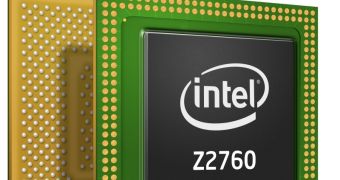The ARM processor technology continues to control the mobile processor market, and by extension the mobile phone and, for the most part, the media tablet segment as well. Intel hopes to finally change that.
The reason Intel continues to fail in its attempts to score smartphone and tablet design wins at ARM's expense is simple: power draw.
Chipzilla's CPUs are simply too power-hungry, due to the nature of the x86 architecture and relatively low attention paid to the efficiency side of things ever since its creation.
ARM Holdings, on the other hand, always made sure its chips used as little power as possible, otherwise it would have been impossible to make phones whose batteries last for hours.
The 22nm tri-gate technology is the means by which Intel hopes to bridge this gap at last.
Currently, third-generation Intel Core i3/i5/i7 central processing units use its (Ivy Bridge). Celeron and Pentium entry-level chips will soon gain the same benefits.
This information came out through announcements and data leaks. Now, there is something new to consider.
Intel mobile SoCs (system-on-chip devices) will begin to use 22nm tri-gate as well. No exact time frame is given for this, but it is quite possible for an example or two to make it to Las Vegas, Nevada, in early January.
The 2013 edition of the Consumer Electronics Show will be held there, and it is a good place for a demonstration.
The 2012 International Electron Devices Meeting is where Intel revealed its plans to release 22nm SoCs, with 20 to 65% better performance than 32nm low-power chips. Sadly, no ETA was given (estimated time of arrival), nor were technical specs or model numbers provided, so we cannot know, exactly, what ARM has to prepare to counter.
At any rate, mid- to high-end ARM chips will have a competition on their hands. NVIDIA and Qualcomm should watch out.

 14 DAY TRIAL //
14 DAY TRIAL //